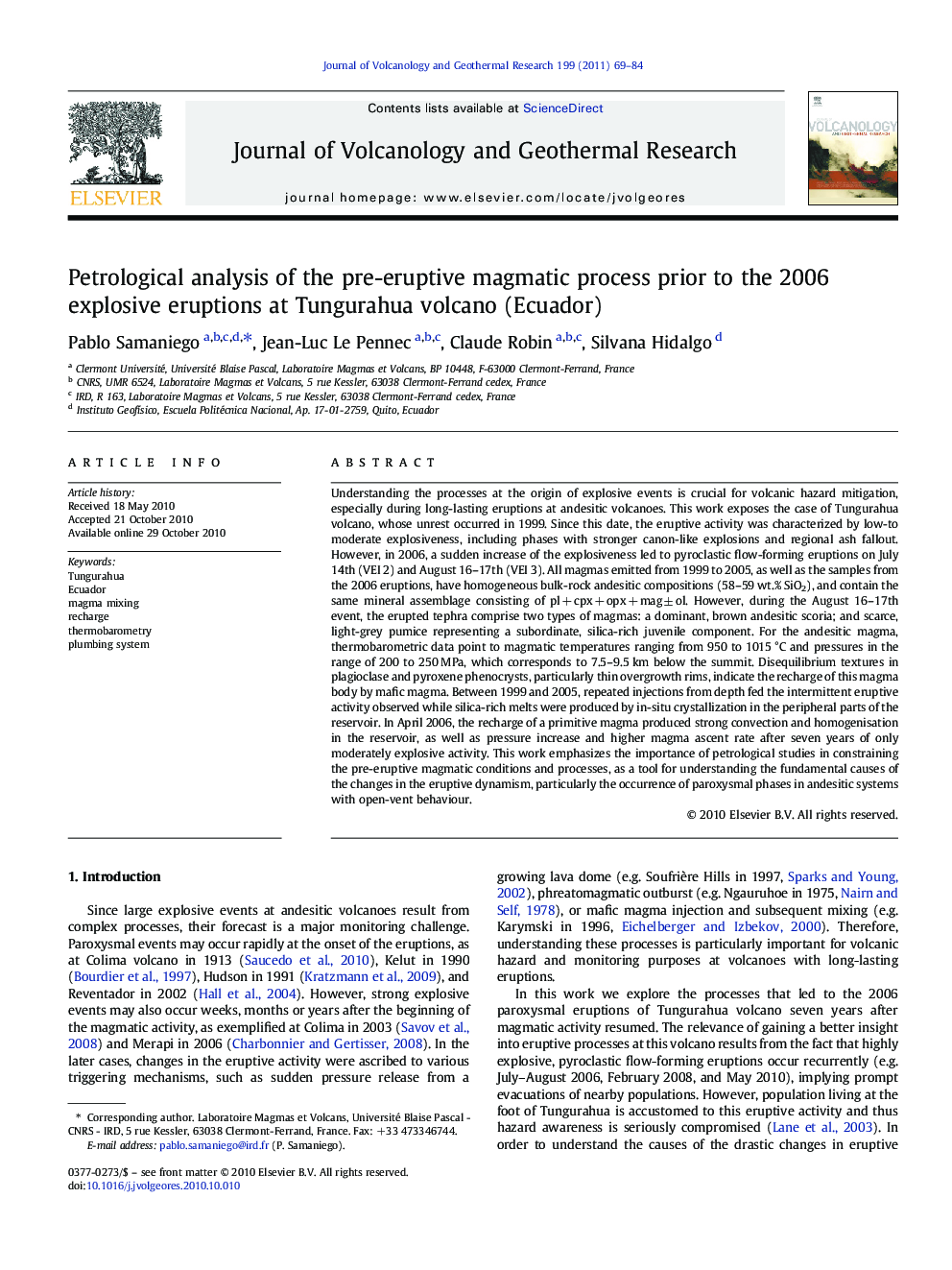| Article ID | Journal | Published Year | Pages | File Type |
|---|---|---|---|---|
| 4713940 | Journal of Volcanology and Geothermal Research | 2011 | 16 Pages |
Understanding the processes at the origin of explosive events is crucial for volcanic hazard mitigation, especially during long-lasting eruptions at andesitic volcanoes. This work exposes the case of Tungurahua volcano, whose unrest occurred in 1999. Since this date, the eruptive activity was characterized by low-to moderate explosiveness, including phases with stronger canon-like explosions and regional ash fallout. However, in 2006, a sudden increase of the explosiveness led to pyroclastic flow-forming eruptions on July 14th (VEI 2) and August 16–17th (VEI 3). All magmas emitted from 1999 to 2005, as well as the samples from the 2006 eruptions, have homogeneous bulk-rock andesitic compositions (58–59 wt.% SiO2), and contain the same mineral assemblage consisting of pl + cpx + opx + mag ± ol. However, during the August 16–17th event, the erupted tephra comprise two types of magmas: a dominant, brown andesitic scoria; and scarce, light-grey pumice representing a subordinate, silica-rich juvenile component. For the andesitic magma, thermobarometric data point to magmatic temperatures ranging from 950 to 1015 °C and pressures in the range of 200 to 250 MPa, which corresponds to 7.5–9.5 km below the summit. Disequilibrium textures in plagioclase and pyroxene phenocrysts, particularly thin overgrowth rims, indicate the recharge of this magma body by mafic magma. Between 1999 and 2005, repeated injections from depth fed the intermittent eruptive activity observed while silica-rich melts were produced by in-situ crystallization in the peripheral parts of the reservoir. In April 2006, the recharge of a primitive magma produced strong convection and homogenisation in the reservoir, as well as pressure increase and higher magma ascent rate after seven years of only moderately explosive activity. This work emphasizes the importance of petrological studies in constraining the pre-eruptive magmatic conditions and processes, as a tool for understanding the fundamental causes of the changes in the eruptive dynamism, particularly the occurrence of paroxysmal phases in andesitic systems with open-vent behaviour.
Research Highlights► Tungurahua volcano experienced highly explosive eruptions in July–August 2006. ► Eruptive products are homogeneous andesites showing frequent disequilibrium textures. ► Petrology points to pre-eruptive temperature and pressure (950–1015 °C, 200–250 MPa). ► Primitive magma recharge triggers the 2006 Tungurahua paroxysms. ► Recharge and subsequent magma mixing plays an important role on the eruptive dynamism.
